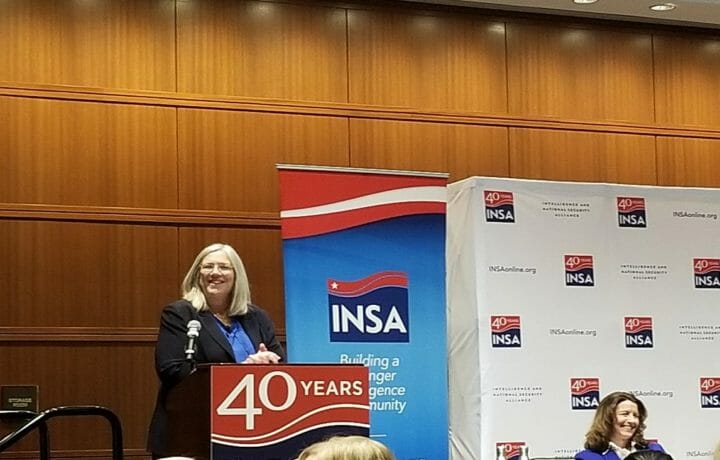Given the historically male dominance in the intelligence field, women have made excellent strides in recent decades, but more progress can be made. That was the message conveyed at the Intelligence and National Security Alliance symposium on women in the Intelligence Community. As reiterated by speakers and attendees at the event, women are not looking to sharp-elbow their way through their careers just to achieve a 50:50 ratio in the intelligence workforce. Like everyone, they’re out to advance their skills and work to get the mission done.
Here are three key takeaways that managers, peers, and recruiters should know about women in the IC.
1. No one wants to be “another crayon added to the box”
Dealing with issues of gender, race, and thought diversity is a delicate issue. Given the history of the nation and the history of the intelligence workforce, there have been and continue to be a lot of historical patterns that need correcting. Having honest conversations about issues can understandably be a daunting and politically-charged task. But one thing is constant: people want to succeed on their own merits.
“No one wants to be picked for a job because of their diversity,” emphasized Kathy Warden, President and CEO of Northrop Grumman. “They want to be picked because they were the most qualified for the job.”
But while hiring shouldn’t be driven by quotas, diversity does need to be one element of a comprehensive talent acquisition strategy. Warden mentioned how her own company has changed over the decade she’s been there and that Northrop Grumman sets goals for diversity. “You need to start with the tone at the top of the company – and you need the top to look like the outcome you’re striving for.”
2. diversity hiring starts long before the application process.
Our nation’s security depends on the excellence of those working in the IC. It’s important that the right people are in the right roles – not just filling seats with warm bodies that check the right boxes. But how do you build a community where more diverse people can see themselves in your workforce?
“It’s still about hiring the best people,” pointed out Tiffanny Gates, CEO of Novetta. “But we need a culture where diverse people are encouraged to apply and succeed – and that happens before hiring.”
If only one type of candidate is applying, you probably need to do a better job of fostering diverse talent earlier in the hiring pipeline. Think broadly about your marketing efforts, your outreach efforts, and the messages you deliver to candidates.
3. want diverse candidates? Sell them substance.
In the first panel of the day, a panelist told the story of her grandmother whose husband lost both his legs in an aircraft carrier accident. She cared for him and raised four children in the 1940’s. Moreover, she was an American woman living in North Africa, trying to work for a living at a time when that was very uncommon. But as her granddaughter pointed out, her grandmother didn’t do this to make a point or break the glass ceiling.
“She wasn’t making a stand. She was just getting the job done.”
Just like everyone, the women in today’s intelligence workforce are driven by the mission to protect America and serve its people. Of course they want the same opportunities to grow and succeed in their careers – and will blaze trails wherever necessary. But women aren’t striving to positions of leadership and excellence just to make a point. They’re doing it because they want to serve the mission.
To recruit a diverse workforce, hiring messages don’t need to pander to a particular demographic. Missions matter to everyone. Convey the value of the work you do, open up possibilities for diverse candidates to see themselves in your organization – and then step aside and let the glass ceilings come crashing down.




